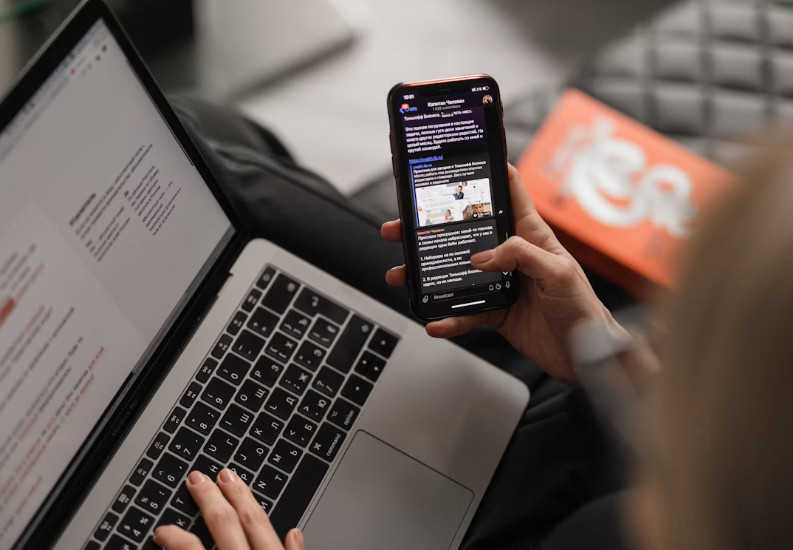Scam Alert: How to Avoid Fake Free Government Phone Offers in 2025
In today’s digital age, where free government phone programs have become lifelines for millions, scammers have found a new way to exploit vulnerable individuals. Protect yourself and your family with this essential guide.
If you’ve ever searched “how to get a free phone from the government,” chances are you’ve come across shady ads, too-good-to-be-true promises, or links asking for personal information. This article reveals how government internet fraud operates, how to identify a Lifeline warning sign, and how to safeguard yourself.

Why Are Free Government Phone Scams Increasing in 2025?
The federal Lifeline and Affordable Connectivity Program (ACP) have connected millions with free or discounted phones, tablets, and internet. However, as awareness and demand for these programs increase, so do fraudulent schemes that pretend to offer the same benefits.
Scammers are targeting:
- Low-income families
- Seniors
- Veterans
- Disabled individuals
- EBT/SNAP or Medicaid recipients
These groups are primary users of legitimate benefit programs and are often more trusting of government assistance offers.
Common Scam Tactics to Watch For
Fake Application Websites
You click a sponsored ad offering a “Free iPhone through Lifeline”. The site looks legit but collects your name, address, Social Security number, and banking info.
Phishing Texts/Emails
Messages like: “You qualify for a free government tablet! Click here to claim it.” These contain malicious links or fake support numbers.
Social Media Impersonators
Fake profiles posing as real providers (like Assurance Wireless) offering promos in Facebook groups.
Door-to-Door “Agents”
In-person scammers posing as Lifeline enrollment staff asking for documents or payments.
Fake Support Calls
Calls claiming to be from government agencies asking to “verify” your information for a free device.
Key Warning Signs of Free Phone Scams
- Asking for payment upfront (“activation fee” or “shipping charge”)
- No official government (.gov) or known provider URL
- Unprofessional website design or grammatical errors
- No clear eligibility requirements listed
- Too many flashy claims like “Get a Free iPhone 15 Instantly”
- No FCC, USAC, or Lifeline references
- No secure HTTPS connection on the site
Tip: Always verify providers at LifelineSupport.org before applying.
Legitimate Program vs. Scam: How to Tell the Difference
| Feature | Legitimate Provider | Scam |
|---|---|---|
| Website URL | Ends in .gov or is a known provider (e.g., assurancewireless.com) | Unfamiliar domains like .xyz, .click, .info |
| Eligibility Process | Requires proof of income or program participation | No verification required |
| Device Availability | Limited supply or specific models | Claims of brand-new iPhones or tablets |
| Cost | $0 or small co-pay ($10.01 for ACP tablets) | Charges disguised as “fees” or “processing” |
| Customer Service | Verified support channels and FCC compliance | Only WhatsApp or social media DMs |
Government Warnings You Should Know
The FCC and FTC have both issued alerts in 2025 regarding:
- Fake ACP Enrollment Calls pretending to verify your eligibility
- Spoofed Phone Numbers imitating government hotlines
- Imposter Enrollment Agencies gathering sensitive documents
Verification Hotline: If you’re unsure, call 1-800-234-9473, the Universal Service Administrative Co. (USAC) helpline for Lifeline/ACP.
How to Protect Yourself (And Others)
1 Double-check URLs and company names
Always verify websites before entering any personal information.
2 Report suspicious sites
File reports at reportfraud.ftc.gov.
3 Educate vulnerable family members
Talk to seniors and relatives who may not be tech-savvy.
4 Research providers
Search for “[Provider Name] + Scam” before applying.
Bonus Tip: Legitimate government programs will never ask for payment information upfront. If they do, it’s a scam.
What to Do If You’ve Been Scammed
Change Passwords
Immediately update all your online passwords.
Contact Bank
Alert your financial institutions if you shared details.
Freeze Credit
Contact Equifax, Experian, or TransUnion.
File Complaints
Report to FTC and identitytheft.gov.
Legitimate Free Government Phone Providers in 2025
To help you stay safe, here are trusted names currently offering government-approved free phones and tablets:
Important: Always apply directly through their official websites or LifelineSupport.
Real-Life Story: How Maria Almost Lost Her Benefits
Maria, a Medicaid recipient from Florida, received a text claiming she was pre-approved for a free iPhone. She clicked the link, submitted her documents, and waited. Weeks later, she received calls about loans she never applied for, and her identity had been stolen.
“It sounded so official. They used the Lifeline logo and everything. I only realized it was fake when debt collectors started calling about loans I never took out.”
After contacting the FTC and Lifeline Support, Maria was able to recover, but the process took months.
Maria’s Advice: “If it sounds too good to be true, it probably is. Stick to official websites.”
Final Thoughts: Stay Protected Now!
Free government phones are a powerful resource for those in need—but only if you go through legitimate channels. In 2025, scams are more deceptive than ever, blending real program names with fake websites or apps.
Don’t Let Fraudsters Win
Before you apply for any free device, verify all providers. Share this article with friends, seniors, or anyone applying for ACP or Lifeline benefits.
Explore our other resources:
Your safety is your first benefit. Don’t give it away to scammers.
Note: Programs funded by the FCC and administered via Lifeline and ACP. Talk Now Mobile is not affiliated with the U.S. government.